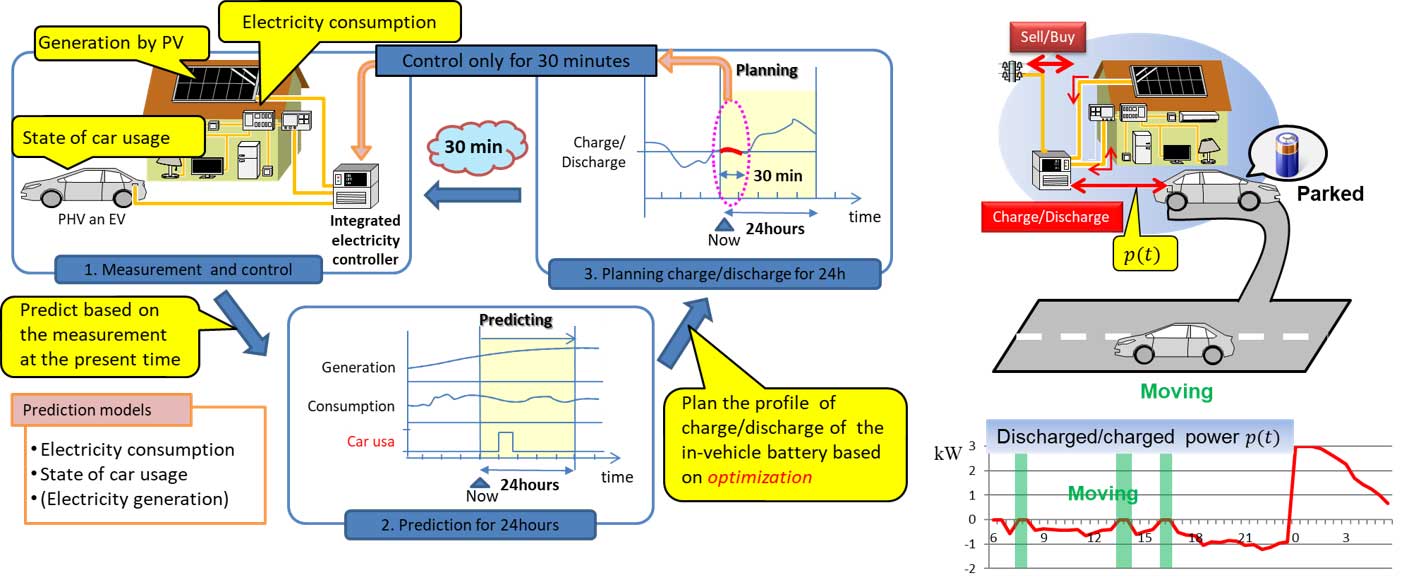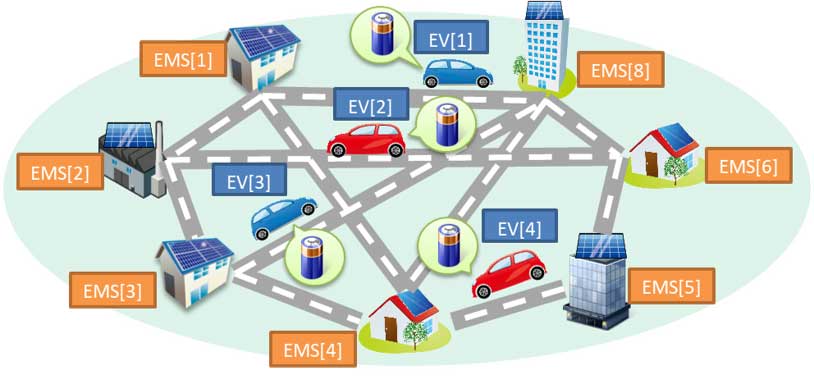Energy management system
Utilize onboard storage batteries while parked
Electric vehicles (EVs) and plug-in hybrid vehicles (PHVs) are equipped with large-capacity storage batteries. While parked, the batteries are recharged for the next run, but when there is a surplus of power, the batteries can be discharged to be used for power consumption by home appliances in the building. Smartly controlling the charging and discharging of onboard storage batteries enables the building's electric power to be efficiently controlled. EVs and PHVs are promising energy buffers for energy management systems (EMS).
Inagaki Laboratory is studying a model predictive EMS that controls the charge and discharge of on-board storage batteries through a series of "1. observation," "2. prediction," and "3. planning.

Model Predictive EMS: 1. Observe current power consumption and generation, as well as vehicle usage; 2. Predict these conditions for the next 24 hours by using prediction models; 3. Calculate the amount of charge and discharge for the next 24 hours to minimize electricity costs using the predicted patterns. The system then controls charging and discharging according to the plan, and after 30 minutes, repeats the process from observation 1. In this way, it is possible to realize an EMS that adapts to changing conditions.
From building to community
EVs and PHVs can be regarded as large mobile storage batteries. We are also conducting research on the integrated management of vehicle-mounted storage batteries for EVs and PHVs that move around the community to manage the energy of the entire region. Integrated management of vehicle-mounted storage batteries requires coordinated control of recharge and discharge among building EMSs. In this research, we are developing a model predictive EMS that includes coordination between EMSs, as well as a method for automatically calculating the electricity bill for power exchanged between EVs and PHVs and the building.
